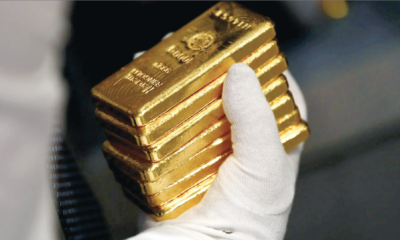Kingdom
World Cup 2030: What Morocco Has Already Won
On December 11, the Kingdom was officially declared the host country, along with Spain and Portugal, of the 2030 World Cup. The majority of planned infrastructures, including stadiums, transportation, tourism, healthcare, etc., have already been built.

What will hosting the World Cup bring to Morocco? This is what often comes back, most often in bad faith, in certain malicious rumors.
And today, without providing any evidence, there is a growing tendency to make the public believe that it is a total loss. This “we” refers to the trends currently dominating social networks and public debate.
It should be noted that there are several ways to organize a World Cup. There are two main ones. The first is to organize it like an events agency. Countries that have opted for this type of organization can spend several billion, even hundreds of billions of dollars to buy themselves fifteen minutes of glory.
Then, nothing. Or worse, end up with a “white elephant” on their hands. There are no shortage of examples, including South Africa.
There is a second category of countries that see this event as a turning point in their development process. The infrastructure put in place and the economic momentum created on this occasion have enabled them to initially join the ranks of emerging countries.
There are of course other cases, rather rare, where hosting a World Cup is part of a “soft power” policy deployed on several dimensions. We can mention the cases of the United States and Canada, whose football is far from being a national or popular sport, unlike most other host countries.
While both countries fought to host the 2026 World Cup, jointly with Mexico, it was because of the impact on their image. This is also part of Saudi Arabia’s goal to completely rid itself of its image as a repressive and ultra-orthodox country, a label that has stuck with it until now.
Morocco, positioning itself among the countries that have set ambitious goals to make the World Cup organization a turning point in their growth trajectory, also aims to enhance its image and increase its influence, primarily in Africa.
On both fronts, Morocco is well positioned to reap great benefits from this organization. The Kingdom’s ambition was explicitly outlined at the last Council of Ministers on December 4, where a large part of the discussions focused on this topic.
“The 2030 World Cup will not only be a sports competition but also a unique opportunity to accelerate the growth momentum of the national economy over the coming years, create more employment opportunities, and enhance the country’s tourist attractiveness, promoting universal values of peace, unity, and sustainable development” said Fouzi Lekjaa, President of the World Cup 2030 Committee, in his presentation to the Council.
Leading the way
It is evident to many, as several specialists have pointed out, that the economic impact of a World Cup depends on many factors.
These include the political, geopolitical, and economic context of the host country, the level of investment in infrastructure, the ability to attract tourists and develop the private sector, and, finally, the effective management of the event.
These factors, stimulated by the catalyst that is hosting the World Cup, lead to a rapid chemical reaction, yielding positive results. However, the environment must be conducive. Morocco, which has been pursuing this dream since the early 1990s, possesses all the necessary ingredients.
There is no need to dwell on its geopolitical and geoeconomic positioning, much less on the investment efforts in infrastructure. The Head of Government recently emphasized this point before the members of the first Chamber on Monday, December 16.
In 2021, the year he took office, his predecessor had allocated a budget of 230 billion dirhams for infrastructure investments. In 2024, this amount was increased to 335 billion dirhams. In the budget for the following year, the investment in infrastructure is around 340 billion dirhams.
On the day of the World Cup in 2030, Morocco will have, as the Head of Government asserts, “built a complete and integrated infrastructure.” These are not mere words. In reality, the Kingdom has significantly bridged the gap in this area over the past 25 years.
Today, Morocco is ranked as the top African country in terms of infrastructure development and 16th globally in terms of the density and quality of its road network.
Following this global event, the Kingdom will have gained several hundred kilometers of high-speed rail lines, drastically reducing travel time between major cities along the Atlantic axis, airports capable of accommodating nearly 80 million passengers per year, a denser network of highways and expressways, and especially a high-quality urban transport network, not only in the six cities affected by the World Cup.
Regarding the development of tourist capacities, the results are simply phenomenal. The Executive set a target of achieving 17.5 million arrivals by the end of its term in 2026. It is already on track to reach this figure by the end of the current year.
Of course, these arrivals translate into revenues – the government is aiming for 120 billion dirhams – and most importantly, jobs, with a target of 200,000. Naturally, a comprehensive strategy has been put in place to support this pace, encompassing both the offering, meaning the attraction product, as well as infrastructure, air transport, and entertainment.
The World Cup will attract millions of visitors to Morocco, which will undoubtedly have a positive impact on the tourism sector, hotels, restaurants, and local businesses benefiting from this influx. Having capitalized on the performance of its team at the Qatar World Cup two years ago, Morocco is now better positioned to capitalize on the 2030 event.
Open-air construction sites
And this extends beyond the tourism sector. The World Cup, which is already beginning, shines a spotlight on the Kingdom. It is a historic opportunity that will enable it to “sell itself” as a preferred destination for investment, a platform that already serves for some to access all of West Africa and even the rest of the continent, and a springboard for others to access European and North American markets.
Once again, Morocco is ahead of the curve. The new Investment Charter has energized the private sector, which is now mature enough to take the leap. This is evidenced by the numerous Moroccan companies that have bid for and secured major infrastructure contracts, such as railways, dams, and stadiums… And this is just a fraction of what it can generate in terms of investments.
To give an idea, during the 6th meeting of the National Investment Commission (NIC), projects totaling 134 billion dirhams in investments were approved, resulting in the creation of nearly 38,000 jobs.
Last Monday, Aziz Akhannouch mentioned a stock of nearly 4 billion dollars (about 40 billion dirhams) that should be submitted for approval at the next meeting scheduled for January. It is a reality that hosting the World Cup will attract foreign investors, contributing to the diversification of the Moroccan economy.
Out of the 56 projects approved by the NIC on December 10, a good portion is planned in the tourism, telecommunications, and health sectors. These sectors are directly related to the organization of the World Cup. This is another sector where this event is a boon for the entire population of the country.
Recall that in 2018, when the Kingdom presented its bid for the 2026 World Cup, it was specified that health would be “one of the most profitable legacies for all Moroccans.” In addition to the five University Hospitals already operational at that time, five more were announced for this deadline: in Tangier, Agadir, Rabat, Beni Mellal, and Laayoune.
We are two years away from this date, and except for Beni Mellal, the Tangier University Hospital is already operational, those in Agadir (almost completed), Laayoune (over 60% progress), and Rabat (a mega-project with over 1,000 beds and 6 billion dirhams of investment) are in an advanced stage of realization. The project for the Beni Mellal University Hospital, which has now been joined by those of Errachidia and Guelmim, is in the process of being launched.
Setting the course
The dossier also envisioned the construction of eleven new regional or provincial hospitals, planned for 2026. The cutting-edge private sector and the network of military facilities were meant to “complement the civilian offering.”
Even prior to being awarded the 2026 World Cup, Morocco had committed to realizing all announced projects irrespective of the FIFA decision. Consequently, achievements in the healthcare system have far surpassed initial projections, with approximately thirty additional regional and provincial hospitals currently under construction.
Several projects have reached advanced stages of development, aligning with a surge in private sector expansions across the Kingdom.
In the context of the World Cup and favorable conditions mentioned earlier, economists discuss the significant “domino effect.” Essentially, public sector investments, totaling around 50 billion Moroccan dirhams, translate into income for businesses that largely reinvest in salaries and taxes. These reinvested taxes contribute to services or social safety nets.
Salaries circulate in the economy through consumption or potential savings, generating revenue for other enterprises and facilitating financing for new projects, thus perpetuating economic growth.
Beyond the definite economic impact, the jointly hosted 2030 World Cup with Spain and Portugal is anticipated to yield social, political, and reputational benefits for Morocco.
The World Cup is expected to foster national unity, instill patriotic pride among Moroccans, and showcase the country’s culture, heritage, and global engagement on an international stage.
The tournament will boost the national football development and establish it as a standalone industry, opening avenues for hosting various continental and international events in sports and beyond.
According to the Head of Government, the organization of the 2030 World Cup acts as a powerful catalyst for expediting investments, representing a significant leap forward and a strategic move towards Morocco’s development. This endeavor presents a unique opportunity for the Kingdom to solidify its global standing as a major player on the international scene.












